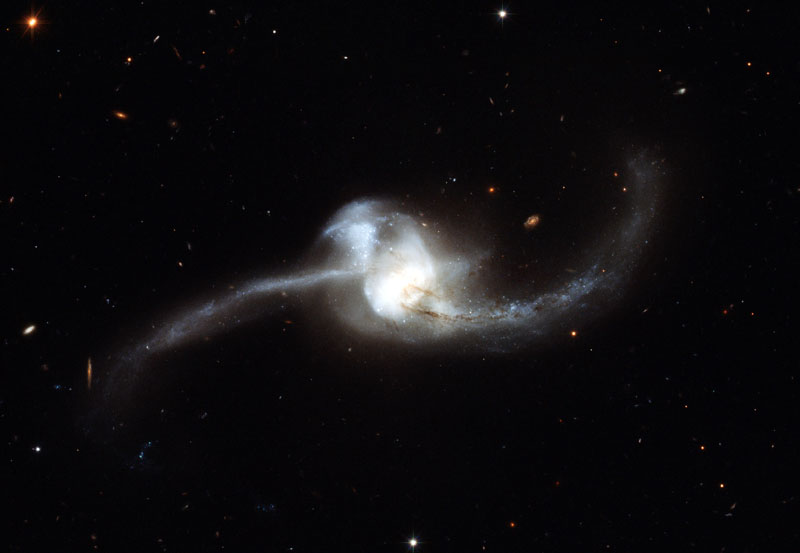Since we are a part of Milky way, it is difficult to construct an external view. However, through various methods, we have determined the size and shape of our galaxy, and our place in it.
Structure:
1. Center: The centre of the Milky way lies in the direction of Sagittarius about 8.5 Kpc away (1 Kpc = 3.08567758 × 1019 meters). In 1915, Shapley attempted to figure out the location of the center of the galaxy by mapping out the positions of globular clusters.
2. Bulge: The bulge lies in the center of the galaxy. It is about 6 Kpc across and extends above and below the disc. There is very little dust. Thus, the bulge consists mainly of old stars.
3. Disc: Most of the stars in the Milky way are located in a disc about 2 kpc and about 40 kpc across. The disc is composed primarily of hot young stars and contains lots of dust and gas.
4. Halo: The halo is primarily made up of globular clusters called stellar halo. It is roughly spherical in shape. A spherical extension of stellar halo is called “dark matter halo“. Both stellar and dark matter halos are centered on the center of the galaxy and is about 30-40 kpc in radius. There is very little dust and gas in the halo. The stellar halo is primarily composed of old stars. Thus, it has even fewer metals than that of the Sun.
Milky way is a spiral barred galaxy. Spiral arms are filled with gas and dust, and therefore are regions of intense star formation. There are lot of young, hot (O and B types) stars in the arms of spiral galaxies, making them brighter and bluer than the surrounding regions. Spiral arms are actually dense waves. Spiral galaxies are supposed to be supported by rotation. Thus, milky way possesses an angular momentum.
Some observational facts about Milky way galaxy
Number of stars:
Age of the oldest star: 13.2 billion years
Total mass: times the mass of the Sun (
)
Type: SBc
Sun’s galactic rotation period: 250 million years
Speed related to CMB rest frame: 552 km/s
Sun’s distance to galactic center: 26,400 (plus/minus) 1,600 light years






